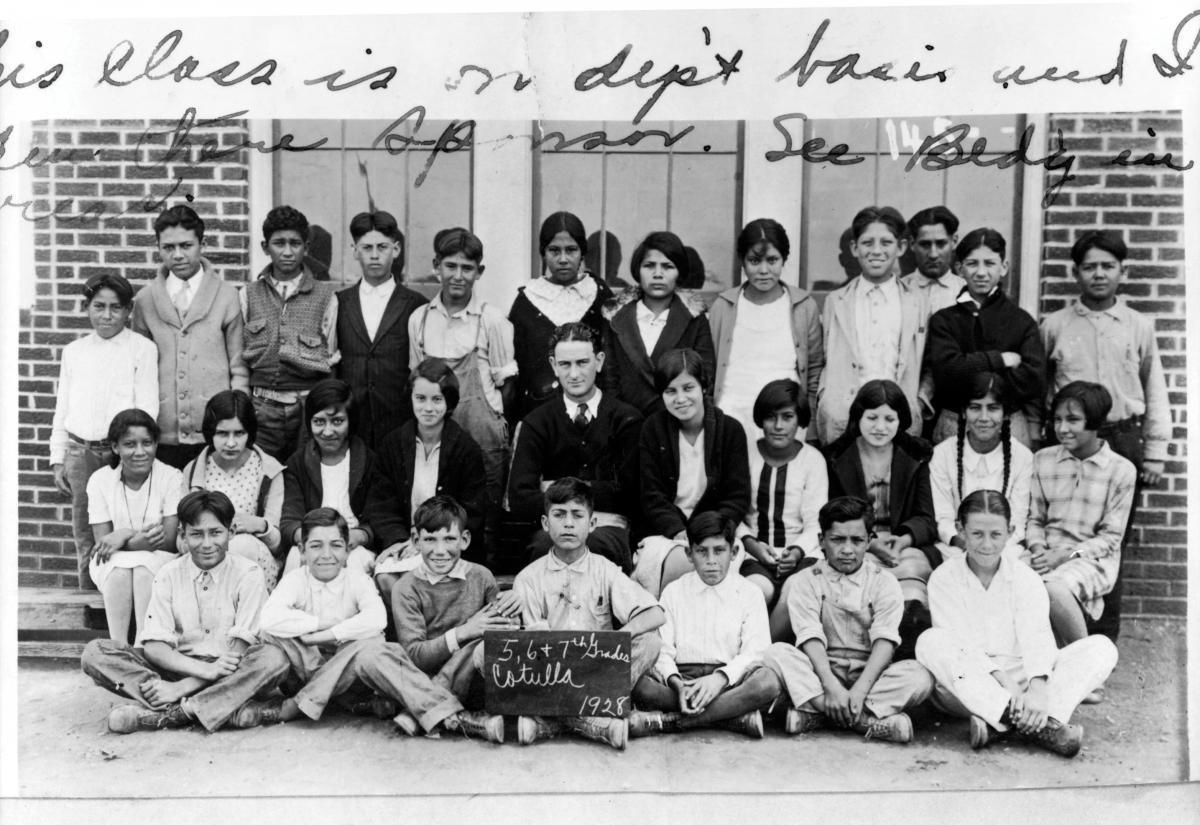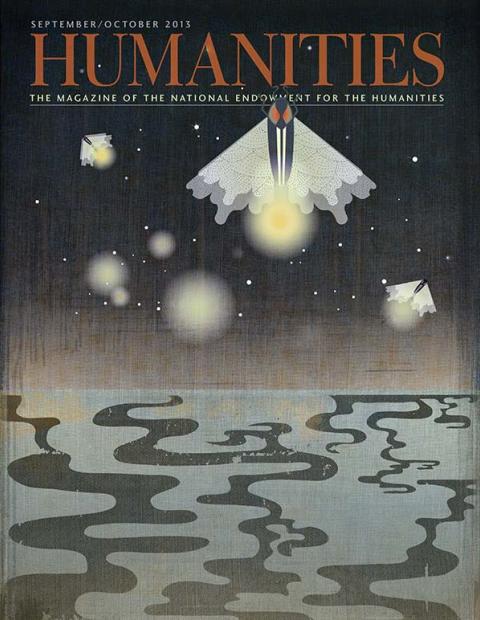On the evening of September 10, 1945, eighteen days after President Harry Truman hung the Congressional Medal of Honor around his neck, a war hero, looking for a meal, entered a dining establishment in Richmond, Texas.
The violence that ensued that night—and the subsequent lawsuit—proved a pivotal moment in the modern civil rights movement, and it happened a decade before Rosa Parks took her historic Montgomery City bus ride. Occurring in a little-thought-about corner of Jim Crow country, the event centers on Macario Garcia, a twenty-five-year-old Mexican national, who had earned the United States’ highest award for valor in action in Germany’s Hürtgen Forest.
Garcia’s story is one of the dozens touched upon in a sweeping new PBS documentary, Latino Americans, a chronicle of the lives and experiences of Hispanics in the United States from the 1500s to the twenty-first century. The series covers the earliest settlers in California and Texas, and tells the stories of the waves of immigrants from Puerto Rico, Cuba, and the Dominican Republic, and of civil rights heroes, among them Dolores Huerta and César Chávez. It also addresses the roots of the challenges today’s Latinos face in navigating an exciting, yet politically perilous, “Hispanic Moment.”
Macario Garcia’s contribution is detailed in the third episode, “War and Peace,” which is about the estimated half-million Latinos from all over the country and Puerto Rico who served in World War II—often side by side with whites, instead of being segregated into separate companies as the million-plus African-American service men and women were.
Never before had such a diversity of soldiers marched into battle together and sacrificed so much. But Latino Americans of the Greatest Generation did not win the respect they had hoped for. Though the war hastened vast societal changes—for example, desegregating many workplaces to support the war effort—Hispanics had hoped their service would afford them something more than the second-class citizenship they had lived with before the war.
For Macario Garcia, the thirst to be recognized as equal manifested itself after a youth spent toiling in the fields with his family. Born in Villa de Castaño, Mexico, on January 2, 1920, Macario grew up in Sugar Land, Texas. His family had moved there in 1924 to pick cotton and tend cattle, in hope of scratching out a better life. Instead, they were met with harrowing poverty.
When World War II broke out, Garcia, by then twenty-two, joined the United States Army and was assigned to Company B, 22nd Infantry Regiment, 4th Infantry Division. Garcia landed on the beaches of Normandy in June of 1944, just two days after the D-Day invasion. By November 27, Garcia’s platoon was engaged in combat against the Germans in the vicinity of Grosshau, Germany. Surrounded by dense forest and limited by few roads, his company found itself pinned down by enemy fire.
During the fighting, Garcia managed to destroy single-handedly two machine-gun nests, kill six Germans, and capture four, allowing two companies to charge up the hill in a successful assault. The bullets Garcia took in his shoulder and foot hospitalized him for two months.
Later, while draping the Congressional Medal of Honor around Garcia’s neck, Harry Truman told him, “I would rather have one of these than be president of the United States.”
When he returned to Texas, Garcia “was in the papers. He was on the radio,” says legal historian Michael Olivas in the film. “He was a genuine hero.”
Olivas says Garcia was honored with a party and dance on September 9, 1945, at the nearby Richmond City Hall, spearheaded by the local chapter of the League of United Latin American Citizens. LULAC organizers had seen the event as an opportunity to demonstrate to the larger community that Mexican Americans “deserved better than their hardscrabble fate” and “were ready to claim their share of postwar benefits and opportunities,” Olivas wrote in the Indiana Law Journal.
The following evening, Garcia entered the Oasis Cafe, which was “at that time, the only night spot in Richmond,” says the café owner’s son, Louis Payton, who is interviewed in the documentary.
“We had very few blacks or Mexican Americans come in and ask for service because we didn’t cater to their needs,” says Payton. “So, we just didn’t see any of them.”
It is unknown how the confrontation actually occurred. The Oasis Cafe owner claimed that Garcia had stumbled in, drunk, demanding to be served. After he was denied service, Garcia proceeded to throw salt shakers, sugar bowls, water glasses, and other items at the mirrored walls, ultimately punching the owner, Donna Andrews, in the mouth.
Garcia contended that he simply asked for service and was beaten with a baseball bat. The story might have ended there. But, in a twist that seems contemporary, the story went “viral” after the episode was mentioned on popular journalist Walter Winchell’s radio show.
According to Olivas, it was Johnny Herrera, vice president of the LULAC chapter that had thrown the party the night before, who got word of the incident to Winchell and other reporters. Olivas speculates that the embarrassing publicity pushed Fort Bend County officials to bring charges of aggravated assault against Garcia.
“Texas was the only southern state with a substantial Mexican population, so Jim Crow morphed into a form not found elsewhere in the agricultural South,” writes Olivas. In addition to the racial segregation practiced against African Americans, Mexicans experienced racial separation based on language, national origin, and immigration status.
This atmosphere made Garcia’s very ability to obtain legal representation a minor miracle. Johnny Herrera, Garcia’s lawyer, cheerleader, and provocateur, was one of a very few Mexican-American professionals licensed to deliver legal services in a time when civil rights organizations such as LULAC were young, decentralized, and underfunded. What funding they did have, came from a tiny group of successful Hispanic businessmen.
But the fire, the indignation, and the will to change their lot in life were not unprecedented: The will to fight for civil rights was by then already evident in Latino communities.
There is another case—the Lemon Grove Incident—in which the Hispanic struggle for civil rights long predates the typical history book narrative of how the nation struggled to redefine itself during the civil rights movement of the mid 1950s.
On January 5, 1931, Lemon Grove Grammar School principal Jerome Green turned away Mexican children at the schoolhouse door, directing them to a small, separate school, which came to be known within the local Mexican-American community as la caballeriza, meaning “the horse stable.” The subsequent boycott by parents eventually led to a landmark lawsuit that became the first successful school desegregation court decision in U.S. history, setting an important precedent for Brown v. Board of Education in 1954.
This pre-civil rights era promise that conscious challenges could lead to real social change did not end with Garcia’s ill-fated attempt at eating at the white club in town—though it must be noted that history does not leave us an accurate enough record to know if Garcia was indeed making a clearheaded political statement.
According to Olivas, on February 17, 1946—just before Garcia’s trial was to occur—Bruno A. Garcia (no relation to Macario), another Mexican-American veteran from the area, was also refused service at the Oasis Cafe and was charged with disturbing the peace. In fact, Bruno Garcia and another Garcia, Magdaleno Garcia, apparently had a few drinks and attempted to duplicate the original Macario Garcia incident.
Negative news coverage of this follow-up event fueled the belief around the country that the people of Fort Bend County were racially discriminatory.
Ultimately, the negative publicity worked. Garcia’s trial was stalled time and again, but in June 1946 the county quietly dropped the charges against Macario Garcia. His lawyer, Johnny Herrera, and LULAC subsequently also ended their campaign to embarrass the Fort Bend officials.
Staff Sgt. Garcia went on to become a counselor for the Veterans Administration, was sworn in as a U.S. citizen on June 25, 1947, then earned his GED, married, and settled in the Fort Bend area by 1952. He lived out a quiet life that ended in a car accident on Christmas Eve 1972.
As the film notes, it is difficult to understand how an entire nation that was overflowing with admiration and gratitude toward veterans could treat some of them as second-class citizens. Yet, it kept happening.
Another Texas son, Felix Longoria, whose story is also covered in Latino Americans, is not best known for dying in battle in 1945 during World War II, but for the fight that ensued when his body was finally returned in 1948 to his hometown of Three Rivers, Texas. The local funeral home refused to hold a wake for him because Longoria was Mexican American.
It was this incident, on top of Macario Garcia’s confrontation and the general climate of hostility toward Latinos, that awoke a population unwilling to accept such poor treatment for veterans who had served honorably. The collective outrage over a persistent accumulation of disrespect can be considered a pivotal moment in the history of Latinos in the United States and a concrete advancement in the fight for civil rights for all across the country.
It spurred Dr. Hector Garcia, who formed the American GI Forum in 1948, to fight the unequal treatment of Hispanic veterans and rally the community. Connected by a shared compassion for impoverished Latino children, Garcia and then-Senator Lyndon Johnson eventually formed an alliance over the Longoria incident.
Senator Johnson settled the Longoria affair by arranging to have Pvt. Longoria’s remains interred at Arlington National Cemetery. The funeral took place on February 16, 1949, with the Longoria family flanked by Senator Johnson and a personal representative of the president of the United States.
The relationship between Dr. Garcia and Johnson galvanized a community that saw itself grow into a national force in American politics, propel civil rights issues to the fore, and help put John F. Kennedy into the White House with the American G.I. Forum’s groundbreaking “Viva Kennedy!” campaign. Dr. Garcia’s passion for the well-being of Latino veterans and their parents, siblings, and children exerted an influence on Johnson, in part leading him to sign the Civil Rights Act of 1964 into law. Of course, the law did not change the day-to-day lives of Hispanics and African Americans overnight. But the series of events resulting from World War II veterans arriving home with increased expectations for themselves and their families led many people from different walks of life to come together to end segregation.
Those catalyzing events, much like the ones in Little Rock, Arkansas, and Selma, Alabama, put into motion a culture of fighting for equal protection under the law that has benefitted countless underrepresented groups to this day in a struggle that continues.




